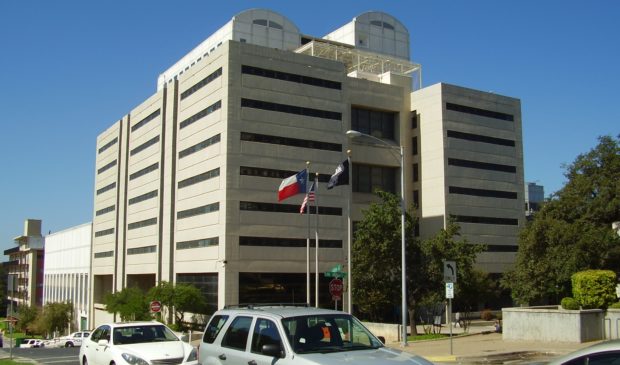County weighs its jail diversion strategies
Wednesday, December 19, 2018 by
Ryan Thornton A lot has happened since the Commissioners Court last saw the Travis County Justice Planning Department’s asset map of strategies for jail diversion on July 31. Fortunately, in terms of keeping people out of jail and connected to their communities, most of it is good news.
Justice Planning updated the court on these strategies Tuesday morning with charts and data showing a significant trend of people spending less time in jail throughout Travis County. With the development of diversion programs and the planned adoption of other programs, Justice Planning is confident that trend will continue for years to come.
The county is approaching criminal justice from several new angles, including the recent decision to create a Travis County public defender office to improve indigent defense and the ongoing discussion of a merger between the County Attorney and District Attorney offices that would de-emphasize misdemeanors and streamline criminal defense. The court also discussed the possible construction of a new women’s facility in Del Valle last week that would better serve the needs of female prisoners. In addition to these efforts, the county is invested in diverting individuals with specific needs away from jail and toward appropriate resources and facilities.
According to the presentation Tuesday morning, the effort has been a success: The first months of fiscal year 2019 show the lowest average daily population (ADP) for October through November of the last five years. Specifically, total misdemeanor bookings – classes A, B and C – have dropped by 28.25 percent on average from fiscal year 2016 to fiscal year 2018. Relative to the numbers of monthly bookings two years ago, the county now files about 1,000 fewer misdemeanor bookings per month. The sharpest decline is seen in class C misdemeanors such as public intoxication, averaging over 300 fewer cases per month from fiscal year 2016 to September of this year.
Valerie Hollier, planning project manager with Justice Planning, attributed the bulk of this decline to a handful of programs. First, Austin’s recently adopted Freedom City Initiative has played a large role by directing police to avoid arrests for misdemeanor crimes like possession of small quantities of marijuana. In addition, the county has adopted the Driver’s License Diversion Program, which offers those charged with a DWLI (driving while license is invalid) the chance to reduce the charge from a class B to a class C misdemeanor and stay out of jail by paying their fines and renewing their licenses. Also, as partly reflected by the dramatic drop in class C misdemeanor bookings, Austin’s Sobering Center has kept many people out of jail since expanding its hours of operation to 24/7 Oct. 1. Finally, Justice Planning has worked on a notification system to notify individuals prior to the forfeiture of a bond.
While it’s not yet responsible for a decrease in jail bookings, Hollier noted the county’s recent $3 million commitment to permanent supportive housing for the most frequent users of emergency services in jails and mental health centers.
Curiously, in the same period, total bookings of felonies have risen by 3.75 percent, around 40 more cases per month than in fiscal year 2016.
With felony offenses on the rise, Hollier said that shifting focus away from low-level offenses will allow the county to put more resources toward those at risk of committing more serious crimes. “If we’re going to divert these individuals from jail, we’re going to have to focus on diversion strategies that meet their needs because they deserve just as much of a chance of being diverted as low-level offenses,” said Hollier.
Assessing an individual’s risk and diverting them toward helpful resources, however, often requires a conviction. Pretrial individuals accused of a felony are assumed innocent and are not subject to the Texas Risk Assessment System that evaluates what someone might need to lower the risk of committing a crime. “We’re trying to balance the justice rights of the accused with the social needs of the accused,” said County Judge Sarah Eckhardt. “It’s problematic, from a constitutional standpoint, to rely upon prosecution, probation and pretrial to do that kind of intervention because it could be incriminating.”
Hollier, however, is confident in the power of a diversion tool that promises to further cut down on the ADP for felony charges: the risk-need-responsivity simulation tool. This is one of three future initiatives Justice Planning believes will support jail diversion in the future. The RNR tool classifies offenders into six groups based on individual circumstances and criminogenic needs in order to identify where needs are going unmet and prevent recidivism. Justice Planning is currently working with Purchasing on an interlocal agreement with George Mason University for use of the tool at a first-year total cost of $86,000, which Hollier said will decrease in the second year.
Commissioner Gerald Daugherty and Eckhardt both had concerns about the cost relative to the potential savings from having fewer inmates in jail. “I’m philosophically all over the idea of running the same kind of analysis on our gaps of need for programming versus capacity for programming in our region and seeing if we can close up those gaps,” said Eckhardt. The tool’s price tag, however, could end up costing the county more than it would save, Eckhardt said.
Photo by WhisperToMe [Public domain], from Wikimedia Commons.
The Austin Monitor’s work is made possible by donations from the community. Though our reporting covers donors from time to time, we are careful to keep business and editorial efforts separate while maintaining transparency. A complete list of donors is available here, and our code of ethics is explained here.
You're a community leader
And we’re honored you look to us for serious, in-depth news. You know a strong community needs local and dedicated watchdog reporting. We’re here for you and that won’t change. Now will you take the powerful next step and support our nonprofit news organization?



